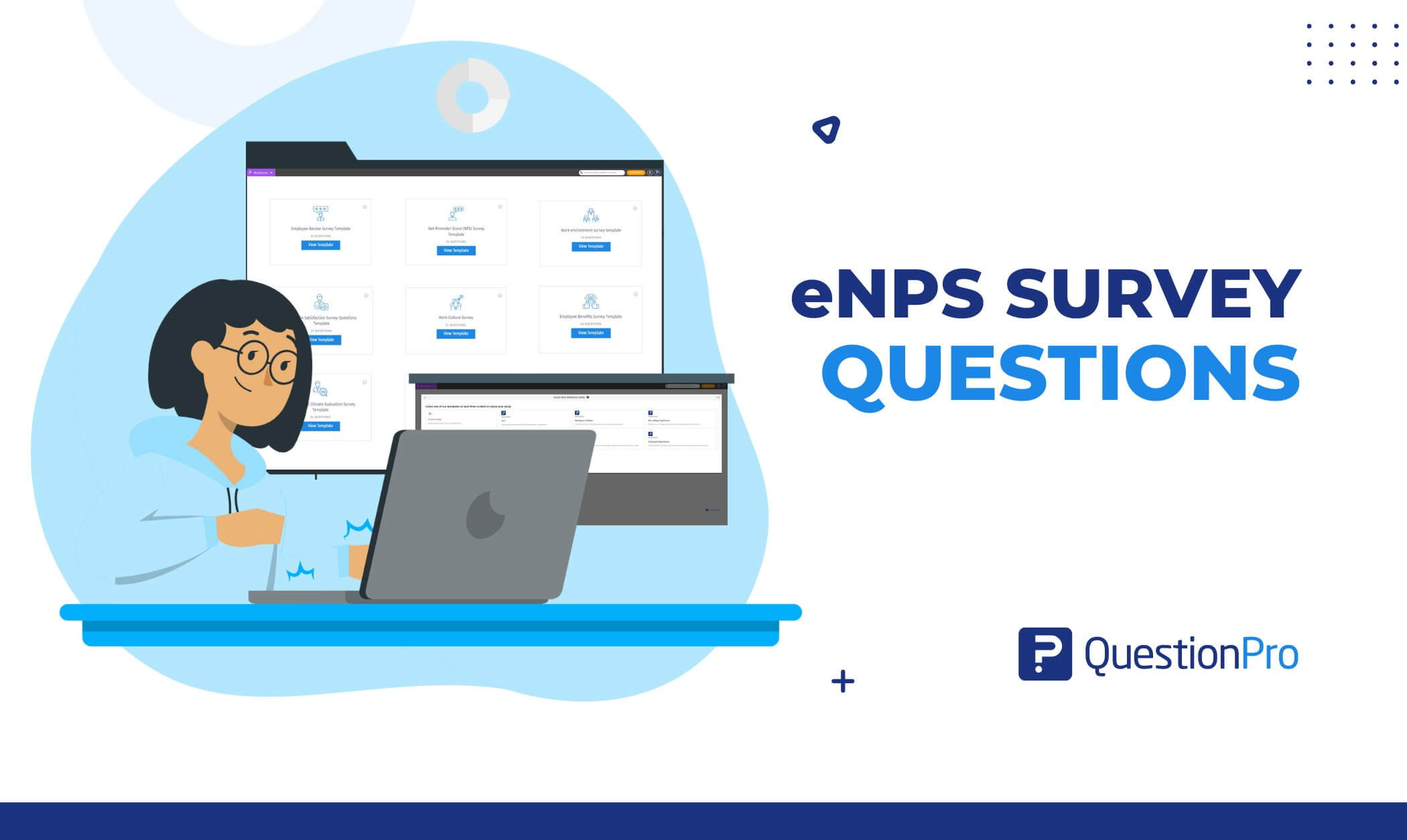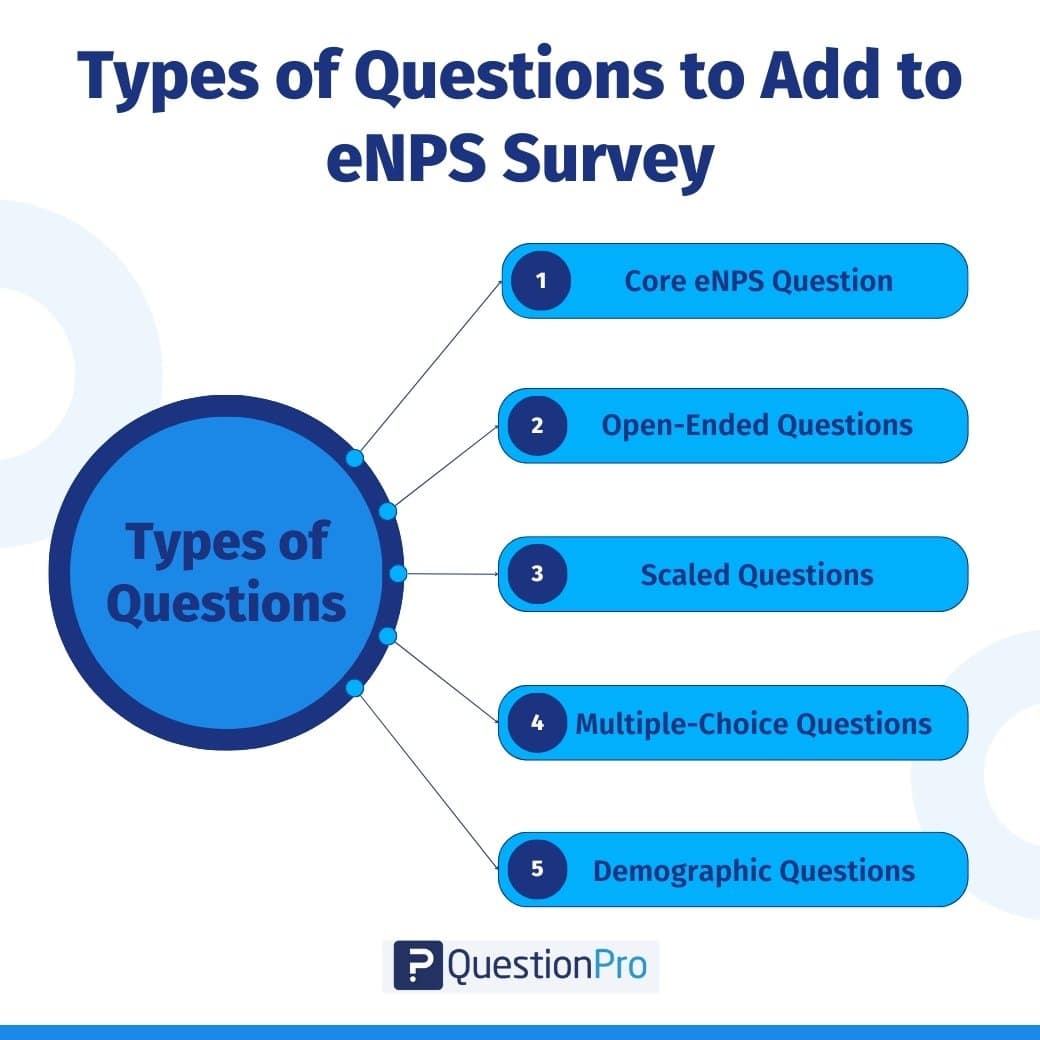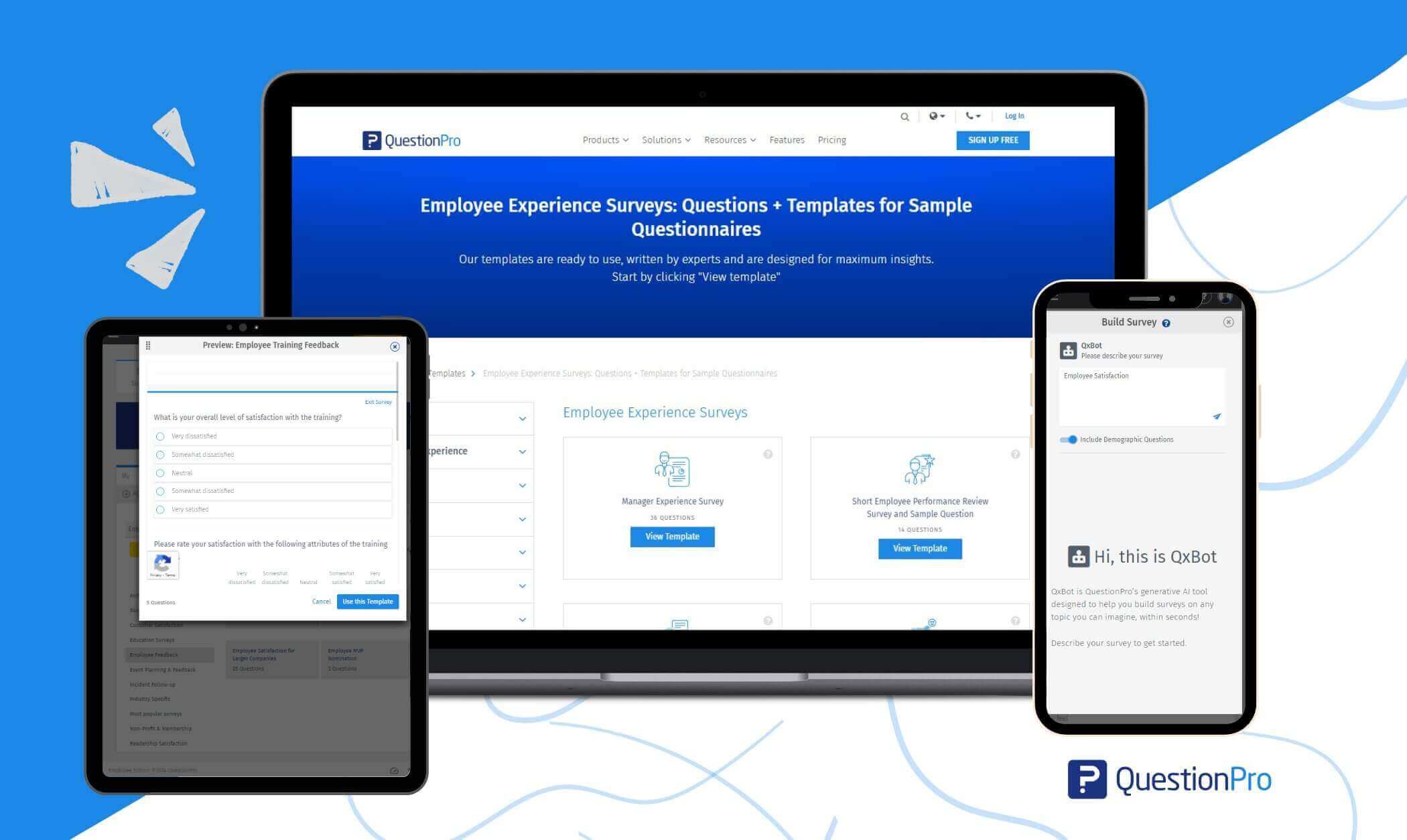
Are you a business owner who doesn’t know which employees are endorsing your company as a workplace and who are planning to leave? To understand your employees better, you need to know about the eNPS survey. By using eNPS survey questions, you can gain deep insights into employee engagement, loyalty, and overall satisfaction.
eNPS questions are short but pack a punch when combined with dialogue. Combining scores with feedback gives you data-driven strategies to improve retention, culture, and performance, making eNPS a vital health check for your organization.
With knowledge of eNPS, you can improve your workplace culture and boost employee motivation. In this article, we will explore eNPS, why it is important, and what questions to include in an eNPS survey.
What is an eNPS Survey?
The Employee Net Promoter Score (eNPS) Survey is a simple but powerful tool organizations use to measure employee loyalty, engagement, and overall satisfaction. It is based on the Net Promoter Score (NPS) concept, initially designed for customer feedback but adapted for the workplace. The survey starts by asking employees one key question:
“On a scale of 0 to 10, how likely are you to recommend this company as a place to work?”
Based on their responses, employees are grouped into three categories:
- Promoters (9-10): Highly engaged and likely to advocate for the company.
- Passives (7-8): Satisfied but not strongly loyal.
- Detractors (0-6): Unhappy and at risk of leaving.
The eNPS score is calculated by subtracting the percentage of Detractors from Promoters, resulting in a number between -100 and 100. A positive score indicates a healthy work environment, while a negative score signals areas needing improvement.
Many companies also include follow-up questions (e.g., “What’s the main reason for your score?”) to gather actionable insights. By tracking eNPS over time, organizations can assess engagement trends, identify workplace issues, and boost retention.
Importance of eNPS Survey Questions?
eNPS (Employee Net Promoter Score) survey questions are critical in understanding and improving workplace culture, engagement, and retention. Here’s why they matter:
- Measures Employee Loyalty & Satisfaction
eNPS provides a clear, quantifiable metric (on a -100 to 100 scale) to gauge how likely employees are to advocate for the company. High scores indicate strong engagement, while low scores reveal dissatisfaction before it leads to employee turnover.
- Identifies Strengths & Weaknesses
By analyzing follow-up responses (e.g., “Why did you give this score?”), Organizations uncover key drivers of engagement or frustration, helping them reinforce positives and address critical issues like management, workload, or culture.
- Tracks Trends Over Time
Regular eNPS surveys allow companies to monitor progress, measure the impact of workplace initiatives, and spot emerging risks before they escalate.
- Boosts Retention & Performance
Happy, engaged employees stay longer and perform better. eNPS insights help reduce turnover, improve morale, and foster a high-performance culture where employees feel valued.
- Quick, Simple & Actionable
Unlike lengthy engagement surveys, eNPS is fast to deploy and easy to analyze, making it a practical tool for HR and leadership to make data-driven decisions.
eNPS survey questions are more than just a metric. They’re a strategic tool for building a thriving workplace. Companies can enhance engagement, productivity, and long-term success by listening to employees and acting on feedback.
Types of Questions to Add to eNPS Survey
Employee Net Promoter Score (eNPS) surveys are powerful tools for measuring loyalty and engagement, but their effectiveness hinges on asking the right mix of question types.

- Core eNPS Question: This essential question calculates your baseline score by categorizing employees as Promoters, Passives, or Detractors. It’s the foundation of any eNPS survey.
- Open-Ended Questions: These free-response questions (“What could we improve?”) capture qualitative insights. They reveal the “why” behind scores but require more analysis time than quantitative questions.
- Scaled Questions: These use 0-10 or Likert scales to quantify specific factors like manager support or work-life balance. The numerical data enables easy trend tracking and comparisons.
- Multiple-Choice Questions: With predefined answer options, these efficiently identify common themes or preferences. They simplify analysis while still providing actionable insights.
- Demographic Questions: Optional questions about department, tenure, or role enable segmentation analysis. They help identify patterns across different employee groups.
How to Combine These Questions in an eNPS Survey
For a 5-minute survey, use this framework:
- 1 eNPS question
- 1–2 Follow-up open-ended questions
- 2–3 Rating scaled questions
- 2–3 Multiple-choice questions
- 1–2 Demographic questions
Combining these questions, your eNPS can be a simple metric into a strategic tool for improving retention, culture, and performance.
Example of eNPS Survey Questions for Your Next eNPS Survey
Employee Net Promoter Score surveys are a powerful way to measure engagement, loyalty, and workplace satisfaction. To get the most accurate insights, you need a mix of quantitative and qualitative questions.
Below are some carefully selected eNPS survey questions categorized for clarity to help you assess employee sentiment, identify strengths, and uncover areas for improvement.
1. Core eNPS Question (Must-Ask)
The eNPS measure is based on the questions
“On a scale of 0-10, how likely are you to recommend our company as a place to work to someone?” (This question calculates your eNPS score)
2. Follow-Up Questions (Open-Ended Questions)
The open-ended questions help employees to describe their thoughts.
- What is the primary reason for your score?
- What could we improve to make your experience better?
- What do you enjoy most about working here?
- What’s one thing we could change to increase your satisfaction?
- What factors would make you more likely to recommend us?
- What’s missing in your current work experience?
- How would you describe our company culture in one sentence?
- What’s the biggest challenge you face at work?
- Do you feel your career goals align with the company’s growth?
- What’s one word you’d use to describe working here?
3. Scaled Questions (0-10 for Measurable Insights)
Scaled questions are used to measure different types of topics within the marking scale.
- How satisfied are you with your work-life balance?
- Do you feel valued and recognized for your contributions?
- How supported do you feel by your manager?
- Are you satisfied with your career growth opportunities here?
- How well does leadership communicate company goals?
- Do you feel your workload is manageable?
- How inclusive and diverse do you find the workplace?
- Would you recommend our benefits package to others?
- Do you see yourself working here in 2 years?
- How aligned are you with the company’s mission?
4. Close-Ended (Yes/No or Multiple Choice)
This type only measures your positive or negative impression about any topic, not how much positive or negative.
- Do you feel your voice is heard in decision-making? (Yes/No)
- Is your role challenging and engaging? (Yes/No)
- Are you satisfied with team collaboration? (Yes/No)
- Have you received enough feedback on your performance? (Yes/No)
- Does the company promote a healthy work environment? (Yes/No)
- Are you proud to work here? (Yes/No)
- Would you refer a friend to this company? (Yes/No)
- Do you feel leadership is approachable? (Yes/No)
- Are you satisfied with remote/flexible work policies? (Yes/No)
- Does the company encourage innovation? (Yes/No)
5. Additional Thematic Questions for Specific Insights (0-10 for Measurable Insights)
- How transparent is leadership about company changes?
- Do you feel your skills are being fully utilized?
- How well does the company handle employee feedback?
- Are you satisfied with workplace technology/tools?
- How likely are you to recommend your team as a great place to work?
- Does the company support mental health and well-being?
- How meaningful do you find your work?
- Are recognition and rewards fair and motivating?
- How well does the company foster professional development?
- How would you rate overall job satisfaction?
Using a mix of question types ensures you get both quantitative and qualitative insights. Regularly conducting eNPS surveys helps track trends, boost engagement, and reduce turnover.
Pro Tip: Keep surveys short (8-10 questions max per pulse check) to maximize response rates while still gathering actionable insights. If there are a lot of questions, divide them and send them quarterly to your employees.
How to Improve Employee Experience by Using eNPS Survey Questions?
Employee Net Promoter Score (eNPS) surveys offer a structured approach to measuring and enhancing workplace culture. Here’s how to effectively use eNPS to drive cultural improvement:
- Core eNPS Question: Start with the essential question: “How likely are you to recommend us as a workplace?” This 0-10 rating identifies Promoters, Passives, and Detractors. Tracking this score over time shows cultural health trends.
- Open-Ended Insights: Add questions like “What would improve your experience?” These reveal why employees score as they do. Look for common themes in responses to identify cultural strengths and weaknesses.
- Measure Key Factors: Use scaled questions (0-10) on specific areas: leadership, growth, work-life balance, and inclusion. Low scores highlight where to focus improvement efforts.
- Segment Your Data: Group responses by department, tenure, or role. This shows whether specific teams face unique cultural challenges that require tailored solutions.
- Act and Share: Address key findings with concrete actions. Communicate changes to employees to show that their feedback matters. This builds trust in the process.
eNPS surveys pinpoint cultural issues early. They show employees that their voices are heard, and regular use creates a culture of continuous improvement.
Best Practices for eNPS Surveys
Good surveys give you honest, actionable feedback that can improve employee engagement and company culture. Here’s how to get the most out of your eNPS surveys.
1. Keep It Simple
Use plain language in your eNPS survey so employees understand each question. Avoid jargon, complicated phrasing, or vague wording that might confuse respondents. Keep it short—5-10 minutes max to get high response rates and avoid survey fatigue.
2. Ask Neutral Questions
Frame questions neutrally to avoid leading responses. For example, instead of “How much do you love our company culture?” ask, “How would you rate our company culture?” Anonymize responses so employees feel safe giving honest feedback; they might not share critical feedback if they think they can be identified.
3. Collect Data Regularly
Run eNPS surveys every 3-4 months to track trends and measure progress. Frequent surveys help you catch issues before they become big problems and give you time to act on feedback between cycles. Compare results over time to see if HR initiatives are working.
4. Act on Feedback and Communicate Changes
Collecting feedback isn’t enough. Analyze responses, identify key issues, and create an action plan. Share findings with employees and outline how the company addresses their feedback. This transparency builds trust and shows that their feedback drives real change.
5. Use Templates for Efficiency
Use pre-built eNPS survey templates to save time and follow best practices. Customize templates with your branding and adjust questions as needed, but keep the core structure the same for benchmarking.
Follow these, and you’ll get meaningful feedback and keep employees engaged in the feedback process.
How QuestionPro can Help You with eNPS Surveys?
At QuestionPro, understanding your employees shouldn’t be complicated. That’s why we’ve designed our survey platform to be as intuitive and insightful as possible, helping you create workplaces where people truly want to work.

Here’s what makes our solution stand out:
- Easy-to-use, expert-crafted templates
We take the guesswork out of survey creation with pre-built templates developed by HR professionals who understand what matters in employee engagement. You’ll get all the essential questions while remaining flexible to add what’s unique to your company culture – no starting from blank pages required.
- Real-time insights at your fingertips
Watch your eNPS results come to life the moment responses start rolling in. Our intuitive dashboard transforms numbers into clear visual stories, highlighting strengths to celebrate and areas needing attention – all displayed in an easy-to-understand format.
- Surveys that meet employees where they are
With the mobile-optimized design, your team can respond quickly and conveniently from their smartphones, whether at their desks, commuting, or between meetings.
- Regular pulse checks
With our pulse survey capabilities, you can move beyond the limitations of yearly surveys. Regular, lightweight check-ins help you stay connected to your team’s evolving needs and sentiments.
Each feature is designed with real workplace challenges, helping you move from collecting data to creating meaningful change in your organization’s culture and employee experience.
Conclusion
Employee Net Promoter Score (eNPS) surveys are more than a metric. They’re a powerful tool for building a thriving workplace culture. Regularly measuring employee sentiment with well-crafted questions gives you actionable insights into engagement, loyalty, and satisfaction.
With platforms like QuestionPro, implementing eNPS surveys becomes effortless. From expert-designed templates to real-time analytics, you have everything needed to turn feedback into meaningful change.
Frequently Asked Questions(FAQs)
Answer: An Employee Net Promoter Score (eNPS) survey measures employee loyalty and engagement by asking how likely they are to recommend your company as a workplace (on a 0-10 scale).
Answer: Every 3-4 months, to track trends while allowing time to act on feedback.
Answer: An ideal eNPS survey combines the core 0-10 recommendation questions, 2-3 open-ended follow-ups, scaled questions on priority areas, and optional demographics, delivering scores and actionable insights.
Answer: Yes! While keeping the core question consistent, tailor 1-2 follow-ups to department-specific needs. You can also use the QuestionPro survey templates for your eNPS surveys.
Answer: Best practices for eNPS surveys include keeping the survey short and simple, asking neutral and anonymous questions, collecting feedback regularly (every 3–4 months), acting on the results with transparent communication, and using templates for consistency and efficiency.







